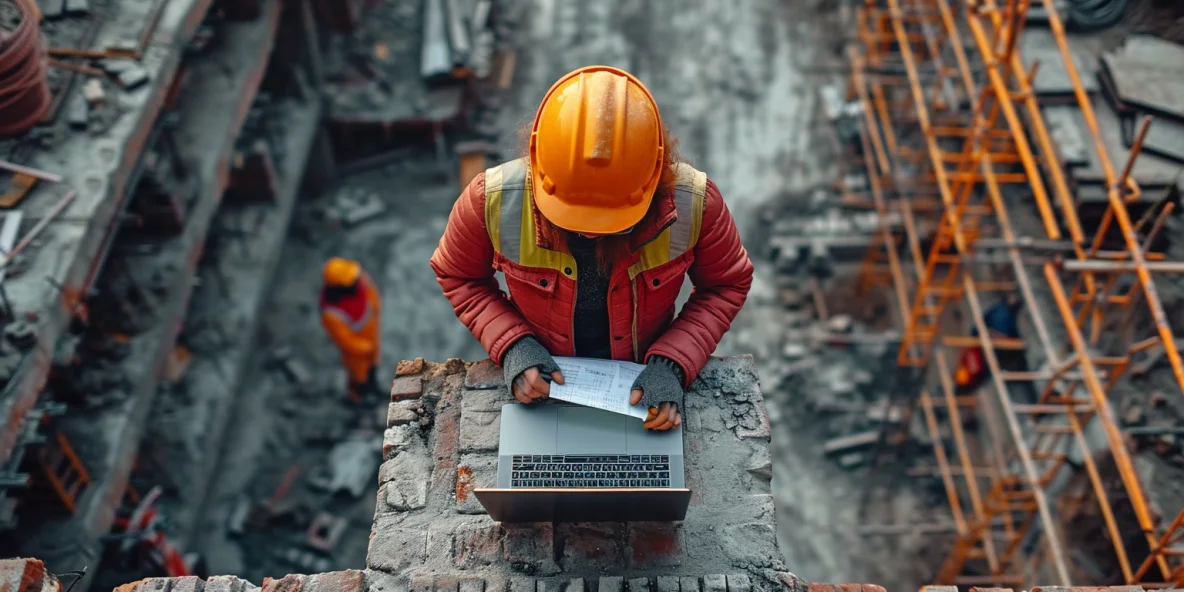A masonry estimator is a specialized professional within the construction industry who is adept at calculating the costs related to masonry work. These estimators must assess the quantity of materials, such as bricks, blocks, stones, mortar, and other supplies necessary for a project. Their expertise also extends to labor cost estimation, as they determine how long a project should take and what workforce will be required.
Their role is critical in the pre-construction phase, as accurate estimates affect a project’s budget and schedule profoundly. Masonry estimators leverage their knowledge of construction techniques and material costs to provide builders and clients with detailed financial forecasts. They often use advanced software to enhance the precision of their calculations, ensuring that estimations are both reliable and efficient.
The proficiency of a masonry estimator can significantly impact the economic viability of a construction project. By striking a balance between the optimal use of resources and cost-effectiveness, they help in delivering projects within budget. Their precision aids in minimizing waste and maximizing return on investment, making their role indispensable in the field of construction economics.
In the intricate dance of construction, a masonry estimator leads the prelude, setting the stage for what is yet to come. Imagine the estimator as the unsung strategist, whose calculations act as the blueprint for financial and resource allocation. This critical role shapes the trajectory of building projects long before the first brick is laid, ensuring that every element is accounted for, from the cost of materials to the labor required to complete the edifice.
Behind every towering skyscraper and every humble abode lies the calculated foresight of a masonry estimator. Their work goes unnoticed by many, yet without their meticulous planning, the edifices that adorn our skylines could not reach their majestic heights. They deftly navigate the complexities of cost, resources, and time, solidifying their position as a cornerstone of the construction industry.
An article exploring the nuances of this pivotal position prompts a deeper appreciation of the underpinnings of construction. It sheds light on the acumen and precision involved in the work of a masonry estimator. As we delve into the world of this indispensable professional, we discover the meticulous effort that makes our physical world not only possible but economically sound.
The Role of a Masonry Estimator in Construction Projects: An Overview
A masonry estimator plays a pivotal role in construction projects, crafting precise cost assessments for structures made from brick, stone, or concrete. Their thorough analyses set a firm foundation for financial and material planning. Knowledge of diverse masonry materials and techniques positions them as vital cogs in the construction machine. Without their expertise, projects would risk financial turmoil and inefficient resource allocation, showing the estimators’ undeniable importance.
Detailed evaluation of a project’s scope is the estimator’s first task, involving meticulous scrutiny of architectural drawings. They must understand complex plans and specifications to determine the quantity of materials needed. In doing so, they bridge the gap between the abstract design and the tangible build. Estimators work in close tandem with architects and contractors, ensuring the envisioned structure comes to life within a manageable budget, showing seamless team collaboration.
At the heart of their craft lies the ability to predict labor costs accurately, a skill that demands both experience and an understanding of local construction markets. They must anticipate the number of hours masons will work and the cost of their expertise. Labor estimates can dramatically swing the overall project cost, which is why estimators embody a perfect blend of foresight and financial acumen, safeguarding against unforeseen expenses.
Assessing the cost of materials is a complex jigsaw puzzle a masonry estimator must solve. From factoring in waste percentages to accounting for delivery charges, they leave no stone unturned. By accurately forecasting these expenses, they prevent costly overruns and supply chain headaches. It’s a balancing act that ensures a project remains both economically feasible and of the highest quality, reflecting their strategic importance.
Estimators also track market trends, currency shifts, and material cost fluctuations. Such trends influence their calculations and, subsequently, the project’s viability. Estimators are foresight specialists, using their analyses to predict and mitigate financial risk. Their role, often unrecognized, is a keystone in the integrity of the construction process. They enable a vision to become a cost-effective reality, their estimates not merely numbers but a blueprint for successful creation.
Breaking Down the Masonry Estimating Process: From Blueprints to Bid
Understanding the masonry estimating process is essential in converting architectural blueprints into a concrete bid. It begins with the estimator dissecting detailed drawings, extracting critical dimensions, and applying their profound knowledge of masonry work. These initial steps are arduous; however, they lay the groundwork for a solid estimation, ensuring every brick and block is accounted for, thus paving the way for a precise bid.
Once the initial review is complete, the estimator embarks on the quantification journey. They measure every masonry element, translating square footage and cubic yards into a comprehensive materials list. This meticulous inventory is more than just numbers; it is the estimator’s commitment to precision that allows contractors to visualize the required materials, their cost, and the scope of the project in its entirety.
The process doesn’t end with tallying up materials; labor costs require equal attention. Masonry estimators must consider skill levels, work efficiency, and the labor market. They often engage in dialogue with work crews to gauge required hours for tasks. Their estimates synthesize these conversations into labor costs that resonate with the practicalities of on-site work, thereby crafting a bid reflecting both ambition and realism.
A crucial aspect often overlooked in masonry estimation is the inclusion of contingencies. Estimators must think ahead, preparing for unforeseen events or changes in scope. By incorporating a margin for error, they imbue the project with resilience, ensuring financial buffer space is available. It’s a nuanced aspect of the process, but one that can determine a bid’s success in the face of unpredictable challenges.
The final compilation of data—from material and labor to contingencies—culminates in the bid. It is a strategic offer designed to win contracts without compromising on profitability. It’s the masonry estimator’s prowess that shines here, with their comprehensive assessments and strategic foresight packaged into a competitive yet feasible bid. The meticulously prepared bid represents the culmination of a process that balances intricacy with efficiency, highlighting the estimator’s critical role.
Understanding the Materials: A Deep Dive into Brick, Block, and Stone Estimations
Grasping the complexity of masonry materials is crucial for estimators. Bricks, blocks, and stones come with unique properties, affecting everything from cost to construction methods. Estimators need deep knowledge of these materials to make precise calculations. Bricks, for example, vary in size, strength, and thermal properties, necessitating tailored estimates for each project’s requirements and ensuring the integrity of the final structure.
Concrete blocks are a staple in modern construction due to their versatility and efficiency. When estimators approach block estimation, they consider factors like block density and mortar mix. These technical specifications directly influence the quantity of materials and labor needed. Understanding the nuances of block construction allows for a more accurate bid, mitigating financial surprises as the project progresses.
Stone masonry estimation is an art form that hinges on meticulous attention to detail. Estimators must account for the irregular shapes and sizes of stones, which often lead to higher labor costs due to the skill required for installation. Additionally, transportation of these heavier materials often incurs significant expenditure. Calculating these elements with precision ensures the successful integration of natural beauty and structural functionality in stone masonry projects.
The durability of materials is a vital consideration for estimators. While some materials might cost more upfront, their longevity can result in long-term savings. Estimators weigh the initial investment against maintenance and replacement costs, calculating life-cycle costs that provide clients with clear expectations. This holistic view of material costs is a testament to the estimator’s role in advocating for sustainable and cost-effective building practices.
Assessing waste and loss is another aspect where estimators demonstrate their expertise. Certain materials are more prone to damage during transport and handling, which must be factored into the estimates. By accurately predicting these losses, estimators avoid the pitfalls of underordering, which could delay the construction timeline and increase costs. This foresight emphasizes the necessity of precise material estimation in maintaining project momentum and budgetary control.
How Technology Is Transforming Masonry Estimation: The Latest Software and Tools
Technology’s impact on masonry estimation is profound, revolutionizing how estimators approach their work. Software capable of processing complex calculations and simulating construction scenarios is now a mainstay in the profession. This technological progression has not only enhanced accuracy but also streamlined the estimation process, saving invaluable time while delivering detailed projections.
These advanced estimation tools bring blueprints to life, allowing estimators to construct virtual models of projects. Through these models, potential issues can be identified and addressed before they manifest on the construction site. The use of these tools signifies a forward leap in preemptive planning, aiding in the creation of bids that are robust and realistic. It’s a transformative shift towards preemptive problem-solving in the industry.
New technology also facilitates real-time data analytics, empowering estimators with up-to-the-minute material prices and labor rates. The ability to integrate live market data into estimations ensures that bids remain competitive and reflective of current economic conditions. This adaptability is critical in an industry where fluctuations can alter a project’s financial landscape within days.
One cannot overlook the role of collaboration that technology has enabled. Cloud-based software permits teams to work concurrently on estimates, fostering a culture of cooperation and shared expertise. This collective effort can lead to refined estimates and a consensual approach to bidding, embodying the collaborative spirit that is essential in construction projects.
Lastly, technology equips estimators with better risk assessment capabilities. Predictive analytics and scenario planning tools assist in quantifying and mitigating potential risks, leading to more comprehensive and secure bids. While the human element remains irreplaceable, these tools serve as invaluable aides, propelling the masonry estimation profession into a new era of precision and reliability.
The Importance of Accurate Masonry Estimation in Project Budgeting
Accurate masonry estimation is the linchpin of sound project budgeting in construction. An estimator’s predictions set the financial tone for the entire project, influencing decision-making at every level. If estimates deviate significantly from actual costs, the financial reverberations can compromise the project’s viability. Thus, precise masonry estimation is not merely a technical demand; it is a foundational economic discipline.
Inaccuracies in estimation can lead to budget overruns, often resulting in project delays or reduced scope to offset the unplanned expenses. These deviations strain client relationships and can tarnish a firm’s reputation for reliability and competence. Accurate estimates are, therefore, essential in fostering trust and ensuring that projects come to fruition as planned, both on time and within the financial parameters set forth.
Estimators hold the responsibility to equip their teams with realistic expectations. By providing detailed and accurate estimates, they enable better-informed decisions during the construction process. Such astute foresight can result in cost-effective procurement strategies and strategic resource allocation, aspects vital to maintaining budget discipline throughout the project lifecycle.
Moreover, a well-crafted estimate can be a competitive differentiator in securing contracts. Clients are inclined to favor bids that reflect a comprehensive understanding of the project and its financial implications. This requires estimators to not only be accurate but also clear in their presentation of costs, showcasing the estimator’s role in aligning client expectations with deliverable outcomes.
In conclusion, the importance of accurate masonry estimation transcends mere numerical accuracy; it is a cornerstone of project management itself. Providing a dependable fiscal forecast allows for a smoother construction process and upholds the integrity of both the firm and the industry at large. It demonstrates that success in construction is as much about precise numbers as it is about building enduring structures.



